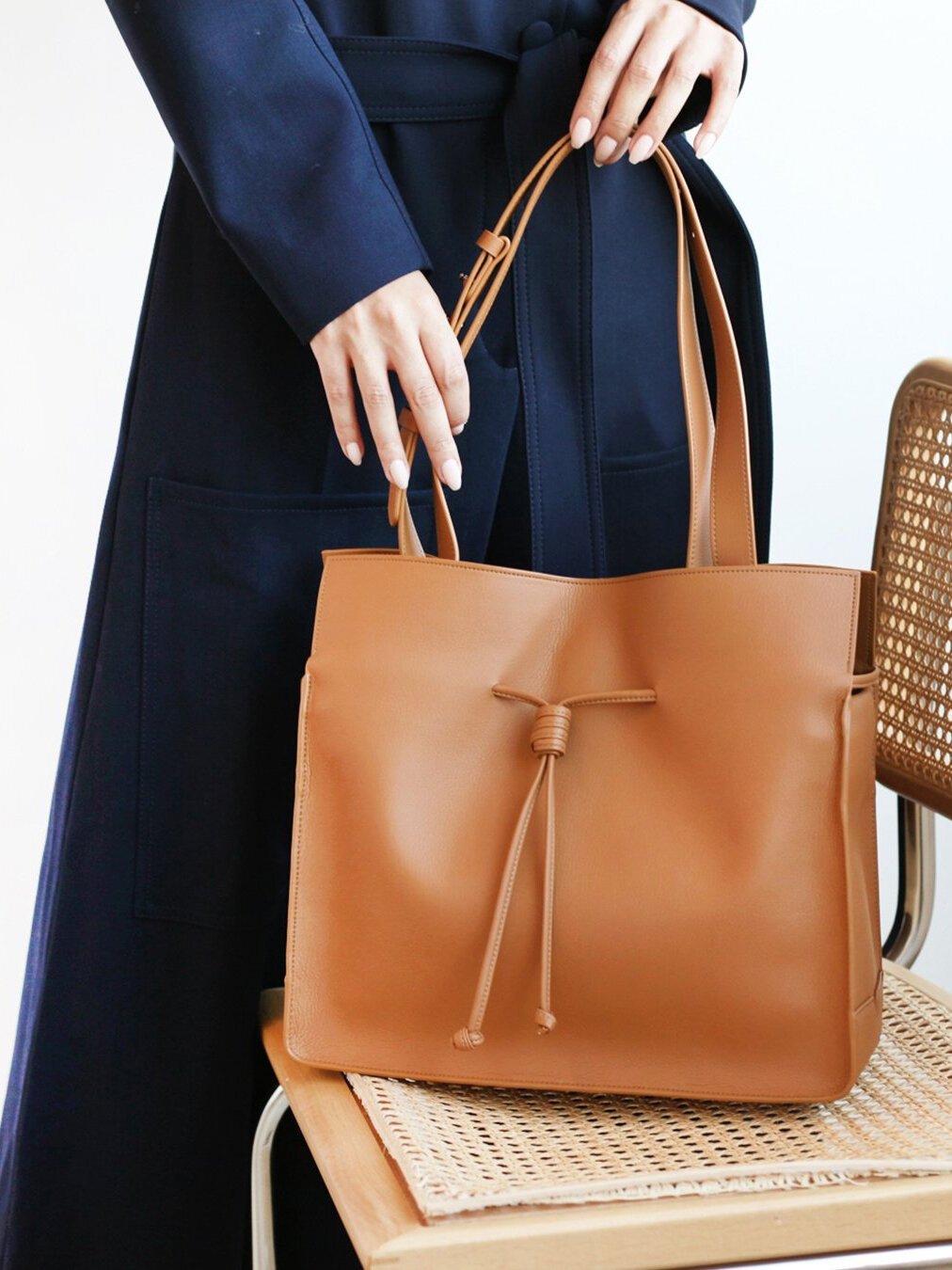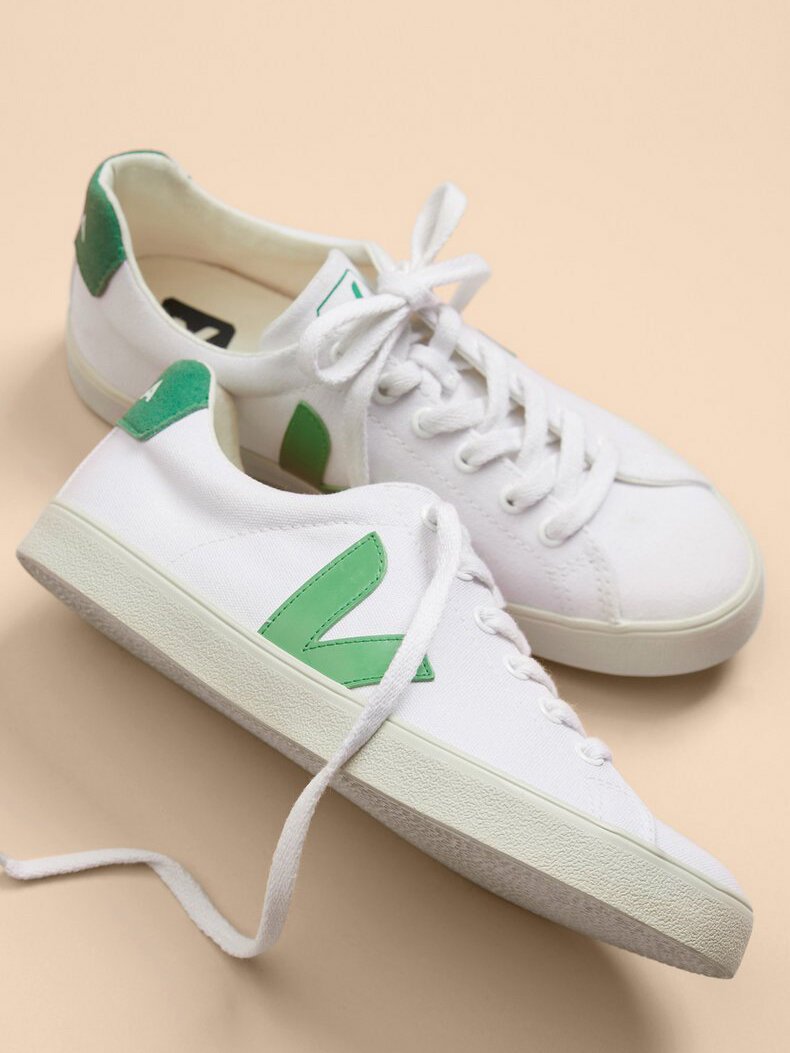
Is Vegan Leather Sustainable? The Answer Is Complicated
Looking Into The Sustainability Of
Vegan Leather Vs. Animal Leather
Leather has a controversial history, and it’s a questionable material when it comes to sustainability. There are several factors to consider when evaluating both vegan and animal leather options: animal welfare, waste, greenhouse gas emissions, and water usage, just to name a few.
This has us wondering, should we do away with leather altogether or find a compromise somewhere in the middle? The answer is nuanced. Let’s take a look at vegan leather and its alternative below.
Option One: Animal Leather
Global meat consumption has been decreasing, but it’s hard to imagine a near-future where the meat industry no longer exists entirely. As many leather products are made from animal by-products (though this is tricky, more on that later), some argue that leather garment production helps minimize waste. The animal hides that would instead end up in landfills are recycled into clothing and accessories—or at least this is what we’re made to believe.
“Leather can withstand wear and tear and last in your closet for decades, become an heirloom item to pass down to future generations.”
The meat industry in its current state is far from sustainable or ethical. It’s one of the largest pollution sources of greenhouse gases. Globally, it accounts for roughly 14.5 percent of all human-created greenhouse gases emitted each year—and more than two-thirds come from cattle. Moreover, the United States is the largest producer of beef and, as reported by Inside Climate News, the average American “consumes nearly three times the global average, at 57 pounds per capita.” While some ranchers are doing their best to farm ethically and sustainably, it’s not nearly enough to mitigate animal agriculture’s environmental footprint.
Moreover, the term by-product is concerning because it may simply be an excuse for a thriving industry. The global leather goods market is projected to top $128 billion by next year, and while hides may come from animals killed for meat consumption, waste reduction is far from the goal. In this way, leather is a co-product of an already unsustainable industry.
“The term by-product is concerning because it may simply be an excuse for a thriving industry.”
Then we have to consider the tanning process. To create leather, it has to be tanned so that the hide doesn’t rot. The most common method is chrome tanning and requires the hide to be placed in a chromium salt bath—which is highly toxic. When the remaining toxic water is disposed of, it can wreak havoc on aquatic ecosystems and even negatively impact human health. A better nontoxic option is vegetable tanning, an ancient practice that uses naturally derived plant chemicals to purify the hide; however, this is less common since it’s more expensive and requires special skill sets.
Despite all this, some argue that leather is durable, long-lasting, and biodegradable, while common vegan alternatives (detailed below) usually are not. Leather can withstand wear and tear and last in your closet for decades, becoming an heirloom item to pass down to future generations. Though it’s biodegradable, tanning and treatments make this more difficult.
Option Two: Vegan Leather
With animal welfare and the environment up for question with traditional leather, vegan leather is on the rise. In fact, the vegan leather industry is predicted to be worth $89 billion by 2025. Animal rights organizations, like PETA, have taken the stance that no animal by-products should be used in manufacturing clothing and accessories. You can avoid these animal welfare concerns entirely by opting against real leather, just like people opt against fur.
However, just like with the leather industry, there are environmental concerns to consider with these alternatives.
“Synthetic fibers from clothing are the biggest source of microplastic pollution in the ocean.”
Unfortunately, the most common leather alternative is petroleum-based plastic, called polyvinyl chloride (PVC). It’s made with fossil fuels, can be harmful to human health, and is not biodegradable.
“Clothing made from plastic can pose a threat during and after its lifespan because it could end up in water or landfill,” according to a recent Harper’s Bazaar analysis of vegan leather. Synthetic fibers from clothing are the biggest source of microplastic pollution in the ocean.
When you consider the negative environmental impact—extracting fossil fuels and using chemicals, non-natural dyes, and excessive amounts of water to create a non-biodegradable plastic leather—the environmental friendliness of faux leather is a bit concerning.
Option Three: Plastic-Free Vegan Leather
“Scientists are using innovative solutions to create plastic-free vegan options from mushrooms, kombucha-cultures, and even pineapples.”
So, how can you avoid animal byproducts and plastic-leather alternatives? Thankfully, scientists are using innovative solutions to create plastic-free vegan options—from mushrooms to kombucha-cultures to even pineapples. While these leather alternatives may still use some petroleum-based products to hold the fibers together, it’s significantly less than that used in PVC leather.
One of the most popular innovations is Piñatex, a natural textile made from pineapple leaf fiber. Hugo Boss, Po-Zu, Votch, and Nae all use Piñatex leather in their collections.
When it comes to sustainability and the fashion industry, remember that it’s always nuanced. Even the most eco-conscious manufacturing processes have an environmental impact. Think about your personal values and ethics when considering where you spend your money.
If animal-derived products or animal agriculture are a hard no for you, vegan leather might be an option, even if it’s a plastic alternative. If you’re passionate about reducing plastics and fossil fuels, real leather or plant-based leather are great alternatives. If none of these options are suitable for you, consider sticking to plant-based fibers like cotton, linen, and hemp!
The ultimate goal is to buy fewer new items and seek quality secondhand clothing that we can wear for years to come. Just know—whatever informed decision you make is entirely up to you, and being conscious of the environment when (or if) you buy is a step in the right direction.
Leah Thomas is an intersectional environmental activist and eco-communicator. She launched the intersectional environmentalist platform to explore the relationship between environmentalism and cultural identity. You can connect with her on Instagram.




